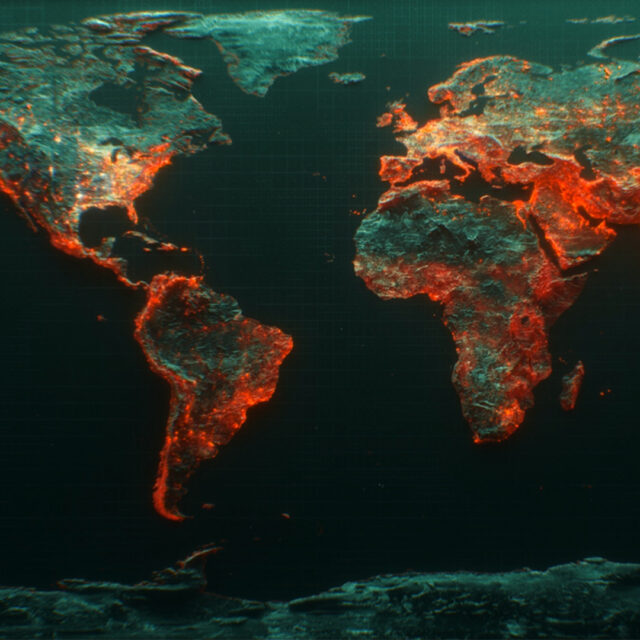Fighting a pandemic and its economic aftershocks requires enormous amounts of money. In higher income countries, governments have stepped forward with trillions in economic stimulus packages. But the majority of developing countries do not have the money to cover the full costs of this pandemic.
Suspending debt service payments is one of the fastest, most effective means of freeing up cash in developing country budgets. The Debt Service Suspension Initiative (DSSI), a G20 agreement to suspend debt service payments for the poorest countries, has freed several billions of dollars originally destined for bilateral debt service payments for 73 of the most vulnerable countries.
However, the World Bank has not participated in this initiative. Its strategy to support the poorest countries has instead focused on providing new loans and grants to help countries deal with the crisis.
So has the World Bank’s strategy worked in DSSI-eligible countries?
The World Bank significantly increased its commitments in 2020
The World Bank committed more funds than it did over the same period in 2018 and 2019. Between April and December 2020, the World Bank committed US$27.2 billion to DSSI countries. That is US$10.9 billion more than in 2019 and US$8.1 billion more than in 2018.
The World Bank also announced specific COVID-19 support. Since April, it has committed over $5 billion for new projects for that purpose. Additionally, it announced that some previously committed grants and loans would be partly redeployed for COVID-19 response.
Actually disbursing funds is more challenging and it takes longer
Disbursements since April were significantly higher than over the same period in 2018 and 2019. Between April and December 2020, the World Bank disbursed US$18.3 billion to DSSI countries. That is US$3.5 billion more than in 2019 and US$6.8 billion more than in 2018.
However, in the middle of a pandemic, speed matters. Overall disbursements are still only about two-thirds of the amount that has been committed since the crisis started. And most of the money disbursed between April and December is linked to projects approved long before. Only 32% of the US$18.3 billion disbursed since April were committed in 2020.
Put another way, the World Bank has only managed to disburse 21.1% of the funds it has committed since April.
Disbursements are not necessarily targeted to fighting the pandemic
The World Bank’s strategy seems to be partly based on the assumption that money is fungible. But that is not necessarily true when there are agreements in place that dictate how the money should be used.
As shown in the chart below, the share of money going to each sector has remained fairly stable since April. This is almost counterintuitive: shouldn’t the share of disbursements for health or social protection have increased dramatically in the middle of a pandemic?
The World Bank announced a number of projects specifically designed to help countries deal with COVID-19. For DSSI countries, the World Bank has committed US$5 billion for this purpose — which is a mere 18% of new commitments between April and December 2020. What’s more, of that, only US$1.6 billion have been disbursed; and 21 countries have not received any COVID-19 specific disbursements.
Not all countries are benefitting equally
A key element of the World Bank’s strategy is focused on ensuring that all countries have positive net flows — meaning they receive more in new loans and grants than they are paying back in debt service.
However, positive net flows do not mean significant support: after all, “positive” can mean anything above US$0. Moving past the aggregate figures — which indeed show that, as a group, DSSI countries received much more from the World Bank than they paid back between April and December 2020 — the situation looks quite different.
The World Bank’s efforts have been concentrated in a few countries: 12 countries account for nearly two-thirds of disbursements to DSSI-eligible countries since April. At the other end of the spectrum, 48 countries combined have received 15% of the money.
That means that of the more than US$15 billion in net flows to the DSSI group of countries, Angola — which in 2020 owed over US$4 billion in debt service to its bilateral, multilateral, and private creditors — received only US$62 million in net flows from the World Bank between April and December.
The Democratic Republic of Congo is a similar example: it is a country of 100 million people with a poverty rate of 77%, and yet it received some US$300 million in net flows from the World Bank — less than 2% of the total for DSSI countries.
Suspending payments would free up valuable resources
Between April and December 2020, DSSI countries paid US$2.8 billion in debt service to the World Bank. This is money that could have instead been used in responding to the health emergency or dealing with the ensuing economic crisis.
In the first half of 2021 — the period for which the DSSI agreement was extended — the poorest countries will pay an additional US$1.9 billion to the World Bank. That is equivalent to over 380 million vaccine doses.
Every tool in the toolbox is needed
So far, the World Bank has decided to use its financial capacity to commit new funds at a faster rate than normal. It has also managed to disburse more money than in previous years. However, this strategy is not reaching every country equally: disbursements are concentrated in a few countries and, in most cases, they do little more than compensate the money that the poorest countries are paying back in debt service.
No tool in the toolbox should be left unused. Bilateral donors have recognised this fact and provided a suspension of debt service payments until June 2021.
But the World Bank, other multilateral organisations, and private creditors have refused to follow. This will make the crisis worse, and recovery more difficult.



